Five climate solutions making a change for the better
We live in an age of mass production and mass consumption – never before have so many products and services been so readily available to us. And at the same time, leaps and bounds in the transport industry over the past 100 years have made journeys quicker and easier than previously thought possible, allowing us to cross oceans in mere hours without lifting a finger. But all of these advancements come at a cost.
The modern era was largely built on fossil fuels, with our cars, homes, and production methods all emitting vast volumes of greenhouse gases. And these gases have been detrimental to our climate – since the 1880s, the Earth’s temperature has risen 0.08 degrees Celsius per decade, and this rate of warming has more than doubled to 0.18 degrees Celsius per decade since 1981. With this rising temperature comes an increase in the frequency and severity of extreme weather events, including drought, floods, hurricanes, and tsunamis, particularly in developing countries.
In 2021, the famous naturalist David Attenborough called climate change “the biggest threat to security that modern humans have ever faced”. If global warming isn’t stopped or drastically slowed, the results will be catastrophic. Such a huge challenge, naturally, does not have a simple answer, but collaboration across multiple industries to cut greenhouse gas emissions and prevent further pollution will allow us to get global warming under control. Slowing climate change is possible, but we will need to get creative.
Innovators across all industries are exploring ways we can all cut carbon and effectively tackle the climate crisis, as well as developing technologies to help build resilience in the face of changing climate and more extreme weather.
There are many exciting solutions fighting climate change that will be featured at ChangeNOW in Paris between 25th and 27th May. Take a look at five of the best.

One global survey in 2015 revealed that over a third of all adults had never even heard of climate change. The researchers emphasised that basic education and public understanding of climate issues are vital to garner support for climate action. Awareness has grown since the survey, but 2021 UNESCO data from 100 countries still showed that only 53 per cent of the world’s national education curricula refer to climate change, and even when it is mentioned, it is not made a priority. This is where Climate Pitch comes in. The company delivers public sessions or workshops and conferences for a specific business to help build public knowledge of climate change. The sessions combine visual presentations with clear explanations and exercises to help audiences quickly understand the issues, and motivate them to engage on a personal, professional, and collective level. Read more

As is set out in the European Green Deal, Europe aims to be the first climate-neutral continent by 2050. Central to achieving this ambition is encouraging the energy transition, and the European Union (EU) is well on its way – renewable energy sources made up 37.5 per cent of gross electricity consumption in 2021. But in order to make renewables the primary, if not only, energy source in Europe and beyond, we need to continue development of technologies that use reliable and consistent green energy sources. Doing just that is startup Minesto, which has created a ‘kite’ with a turbine that ‘flies’ underwater to generate electricity from predictable tidal streams and ocean currents. The device is attached to vessel with a tether, and a control system onboard autonomously steers the kite in figure-of-eight motions. This movement pulls the turbine through the water at a water flow much higher than the actual stream speed – and this faster speed generates extra power. Read more

Around the world, the loss of crops caused by untreatable pest damage or plant disease is estimated to be between 20 and 40 per cent. And at the same time, increasing extreme weather is putting additional pressure on growers. With the global population continuing to rise, the agricultural industry needs to find effective and sustainable ways of building resilience. One way of doing this is taking advantage of technology. Data science company Fermata has created an artificial-intelligence-powered (AI) solution, called Croptimus, that helps growers spot disease early and track plant changes over time. With the technology, farmers can cut labour costs and reduce pesticide usage by 25 per cent. Read more

One study conducted by Oxfam in 2021 that analysed the investments of 125 of the world’s wealthiest billionaires discovered that up to 70 per cent of their emissions come from investments in polluting industries, resulting in an average of 3 million tonnes of carbon emissions every year. As much as we may be trying to fight climate change with daily actions, there needs to be a drastic change in where the world’s money is going and what it is funding. Enter Goodvest, a fintech that makes sure your savings are not going towards harmful sectors, such as the production and extraction of fossil fuels, armaments, tobacco. Goodvest analyses the entire carbon footprint of a user’s investments in order to limit the global warming trajectory of funds, helping individuals invest responsibly without contributing to climate change. Read more

The United Nations Environment Programme (UNEP) estimates that a staggering 931 million tonnes of food are thrown away in households, retail, and the food service industry every year. Not only does this mean resources are wasted with the growing of this food, but when it’s not disposed of properly and ends up in landfill, food products break down and release methane, which is detrimental for climate change. To help reduce the volume of food being thrown away unnecessarily, Ryp Labs developed StixFresh. Once placed on produce, these food-grade stickers make items last up to twice as long, reducing the chances of food getting thrown away due to spoilage. Read more
Springwise is a proud partner of ChangeNOW, which takes place in Paris 25-27 May 2023. As the world’s largest event for the planet, the three-day international summit brings together entrepreneurs, business leaders, and policymakers to accelerate change. Tickets are available now and Springwise readers can get a discount of 20% by using the code: SPRINGWISECN23
Words: Matilda Cox

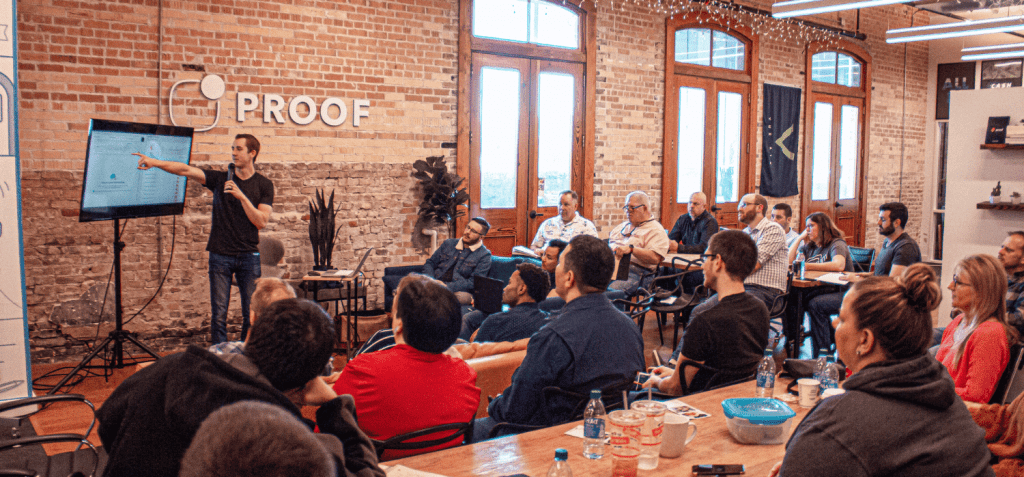










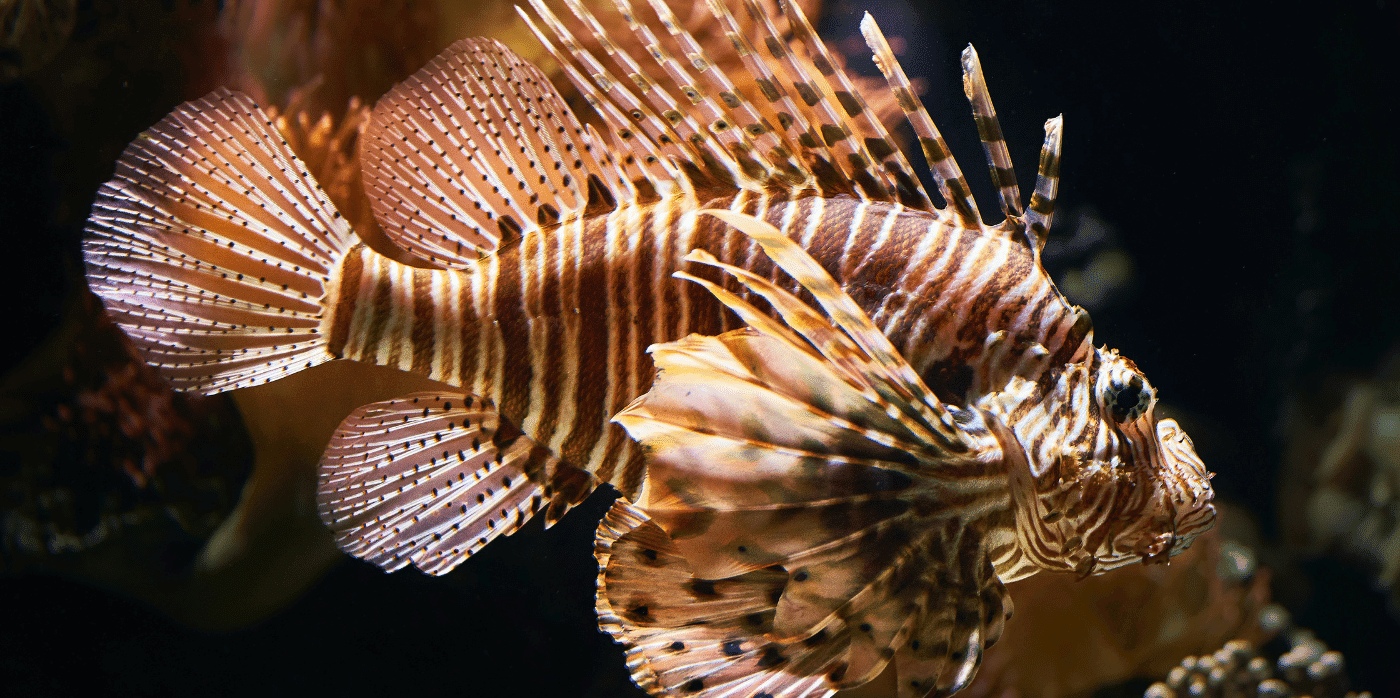
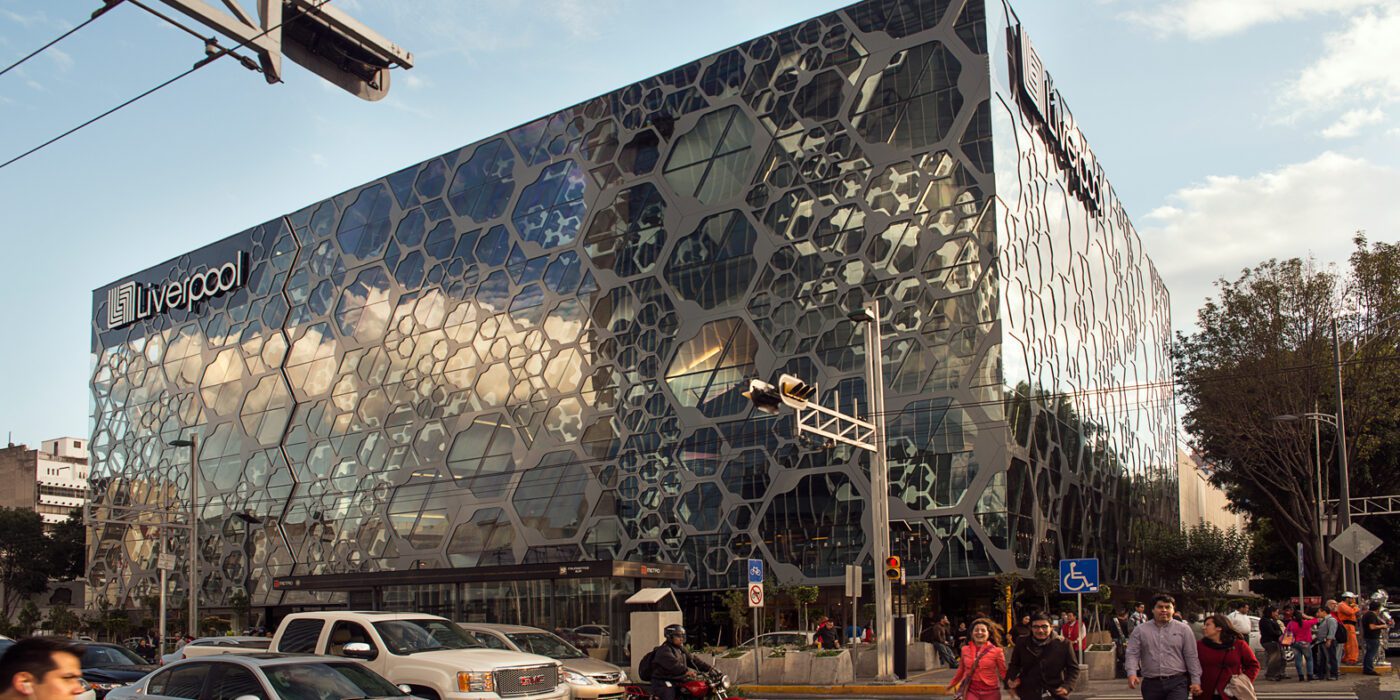
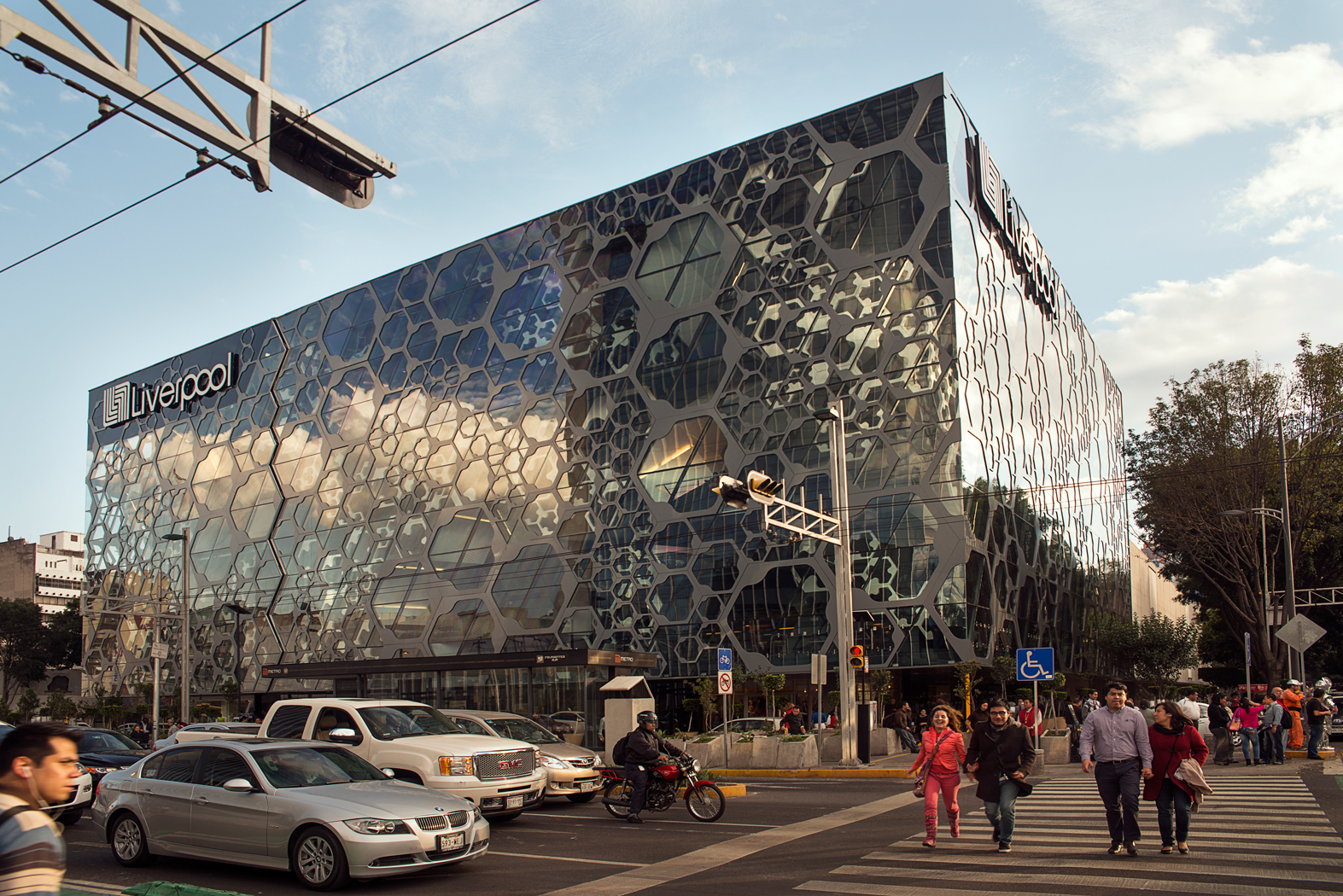
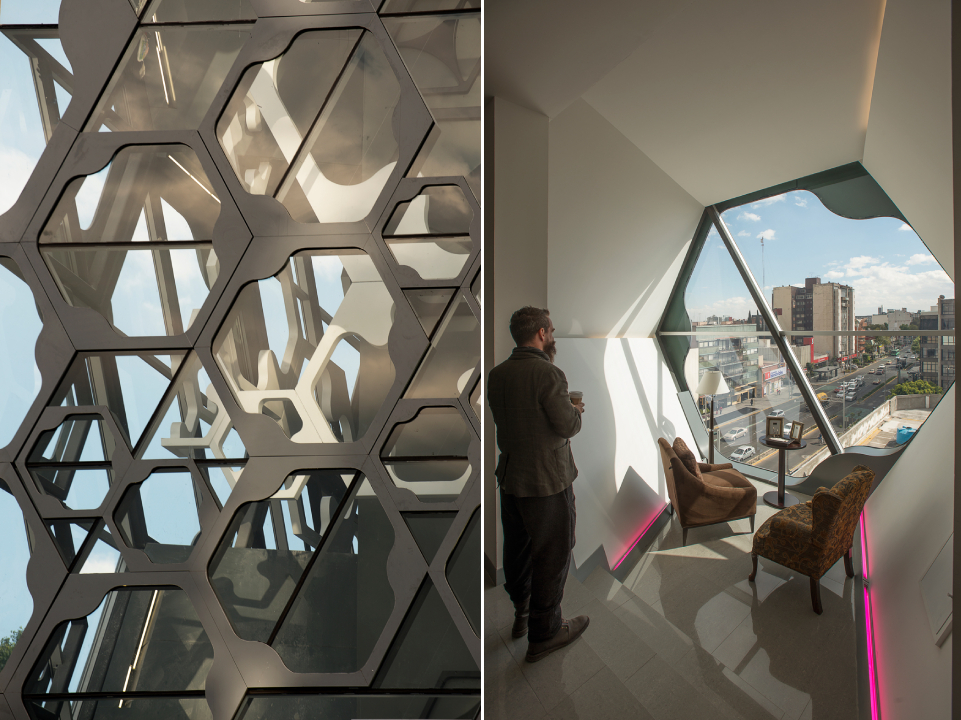
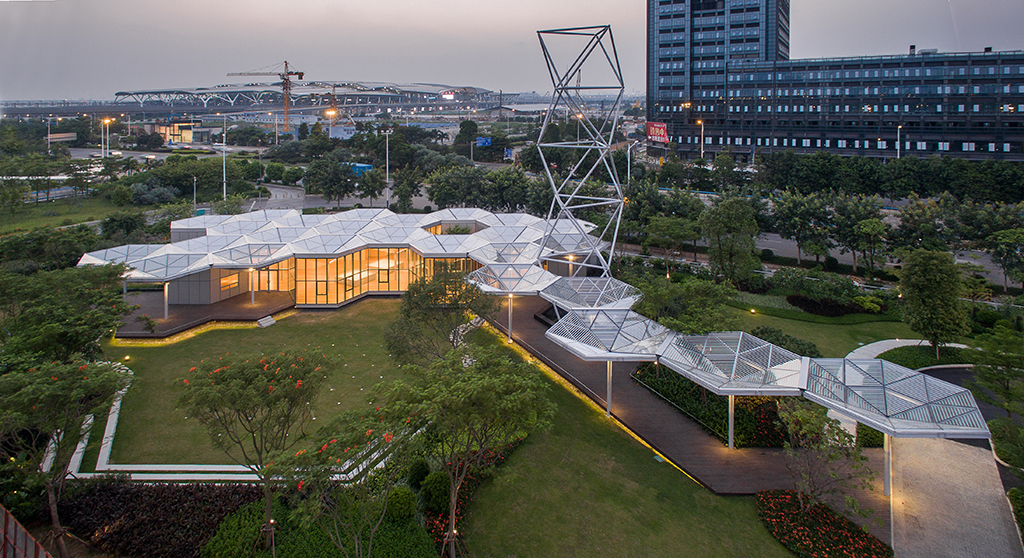
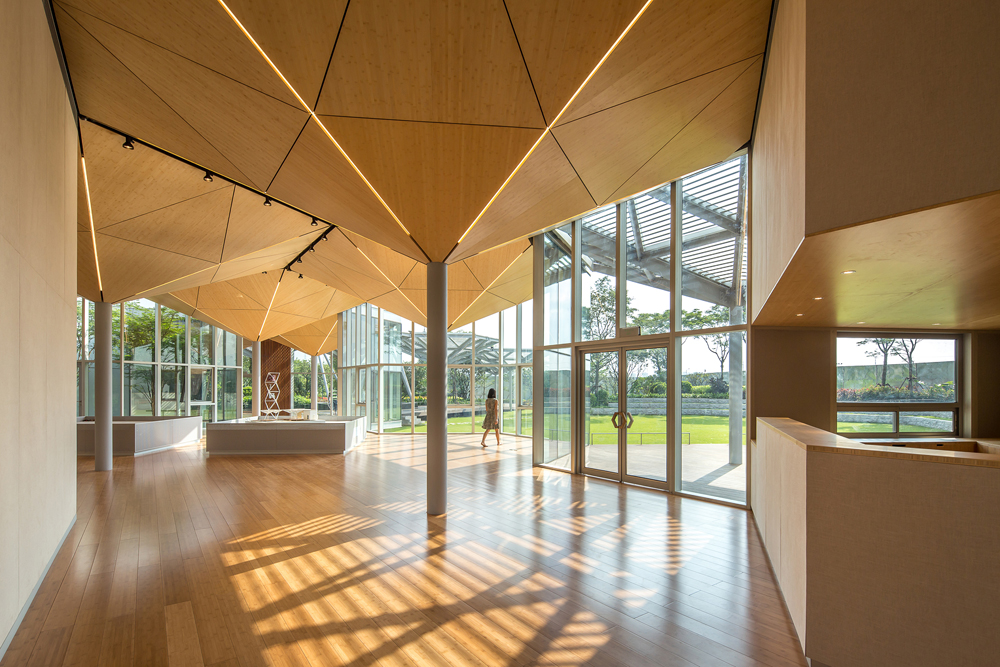
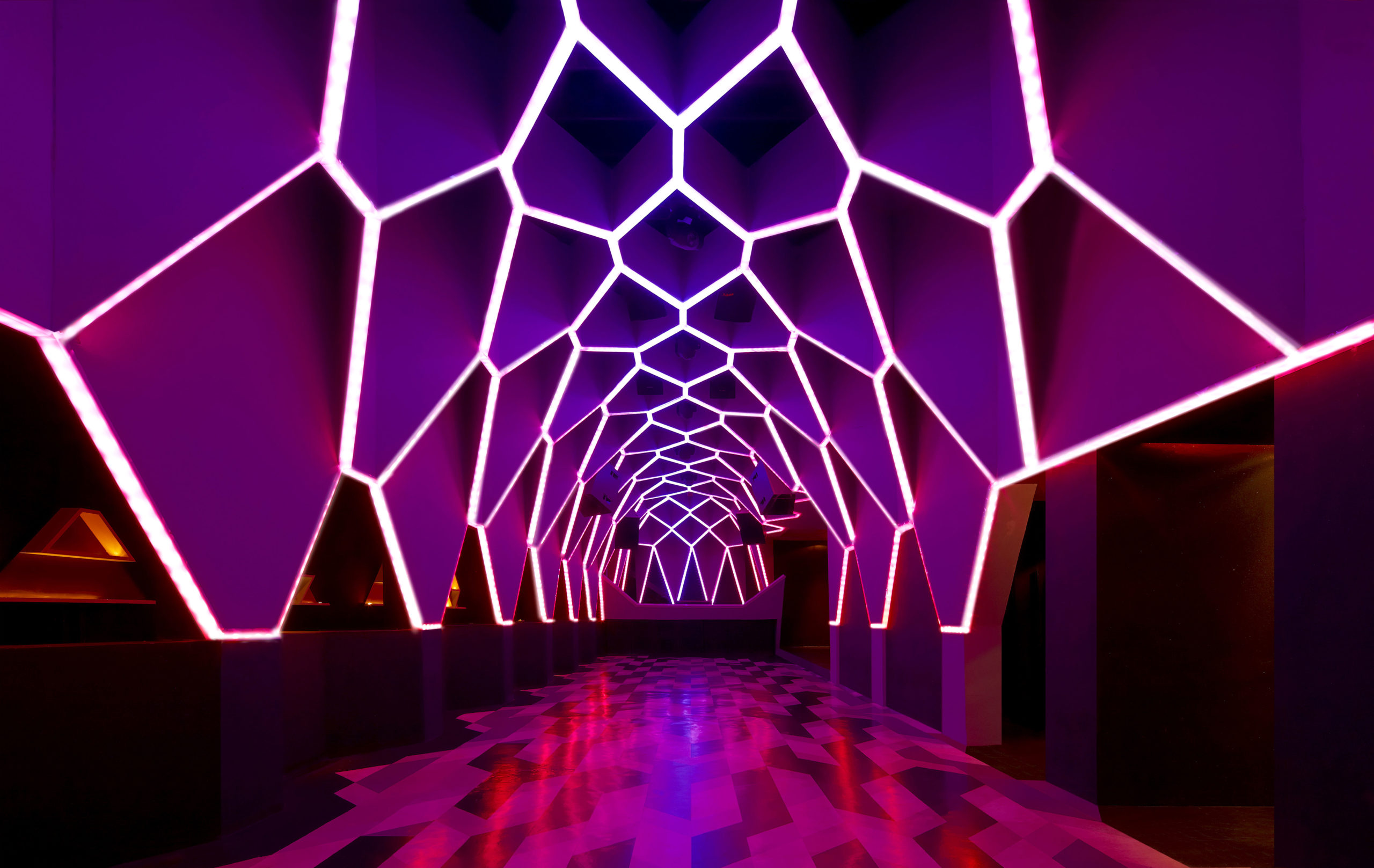
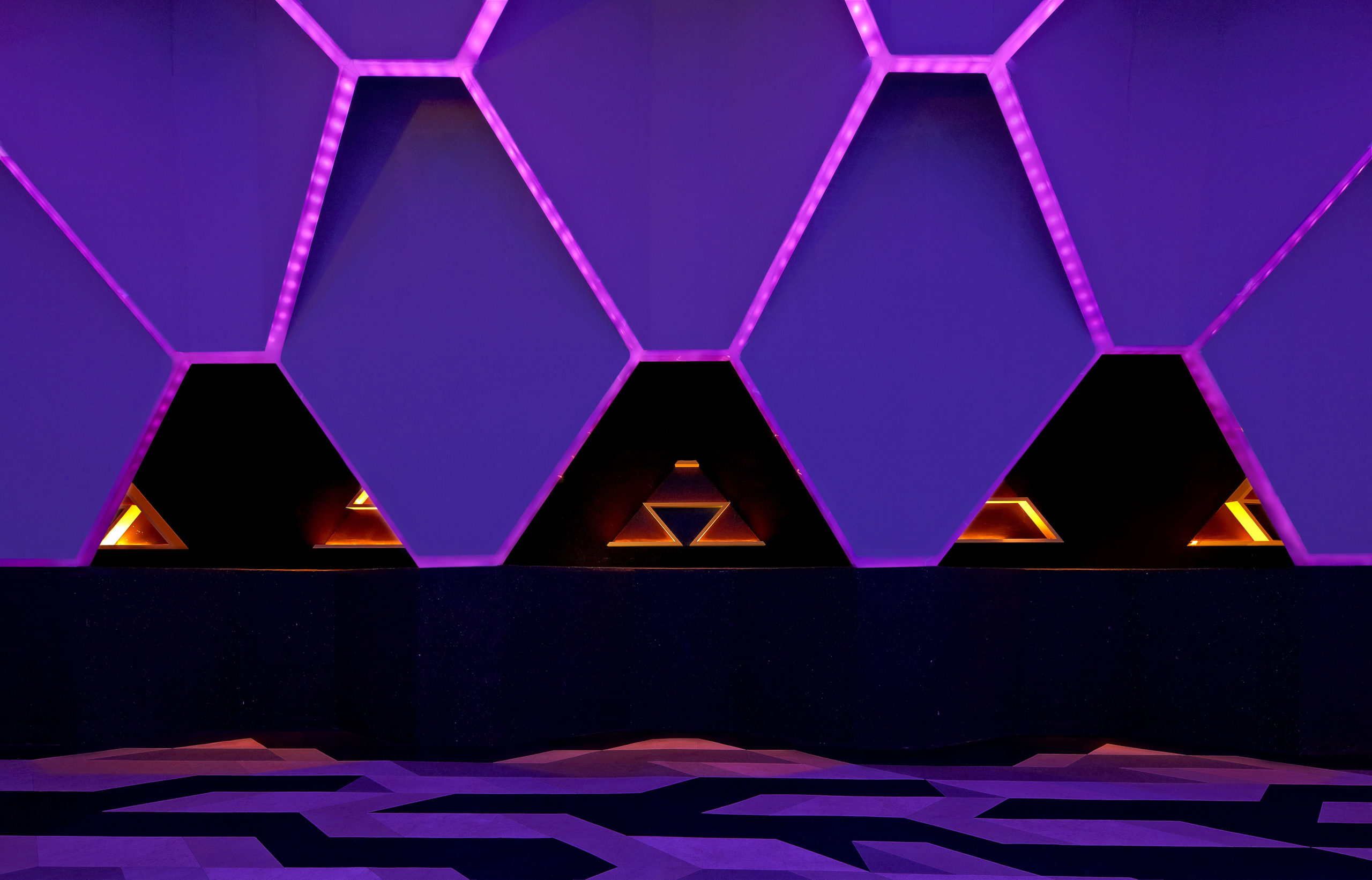 Josefine/ Roxy Club by Fred Mafra, Belo Horizonte, Brazil
Josefine/ Roxy Club by Fred Mafra, Belo Horizonte, Brazil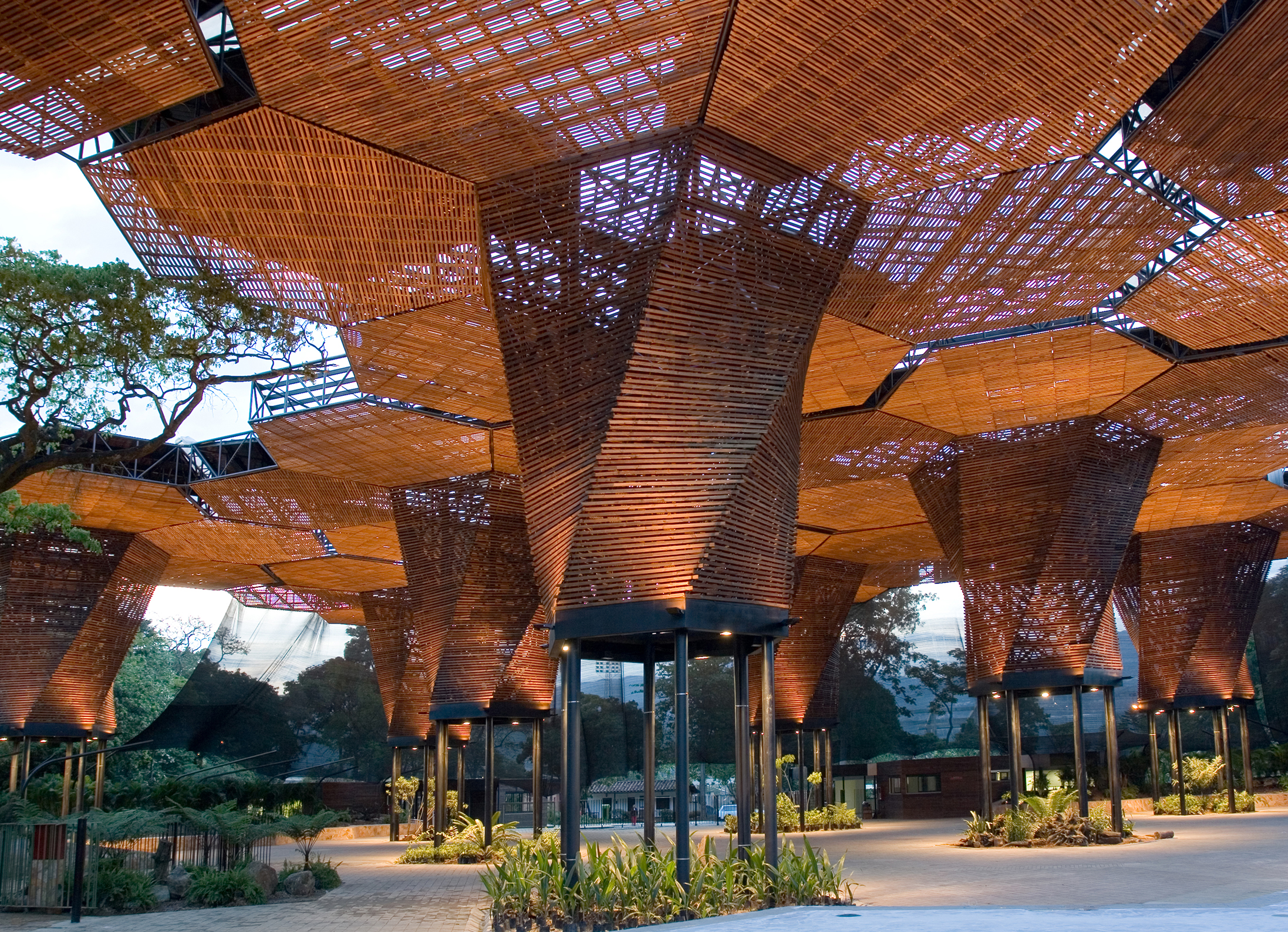
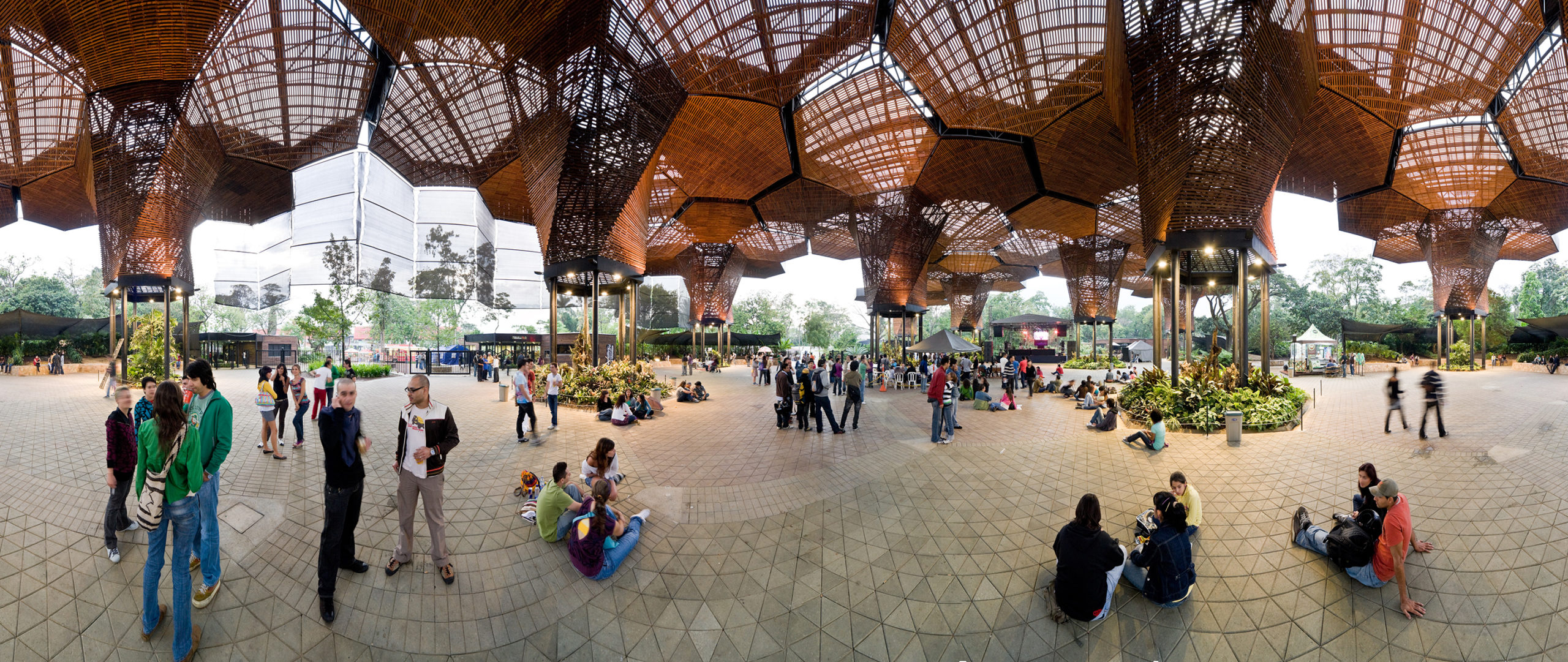


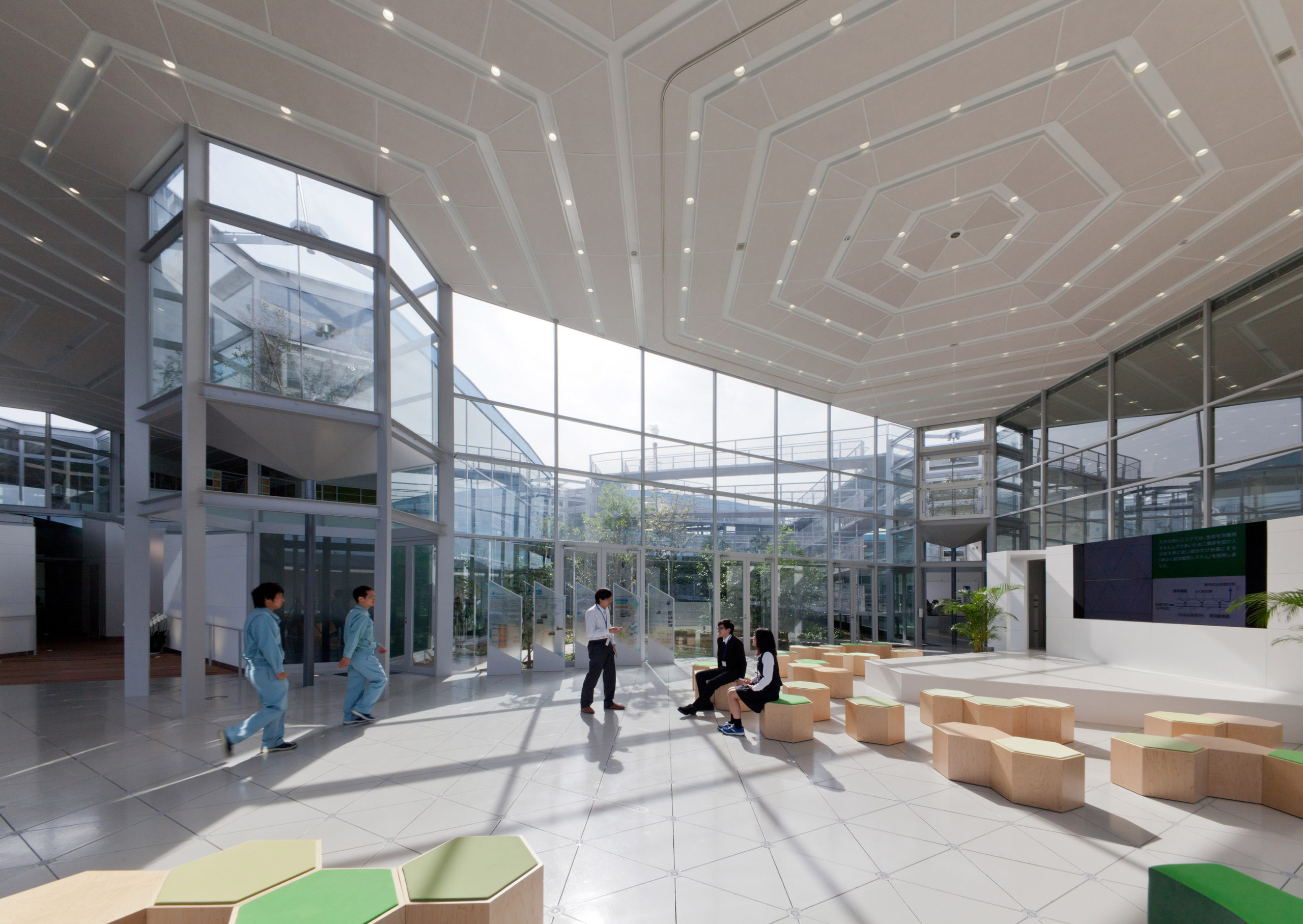
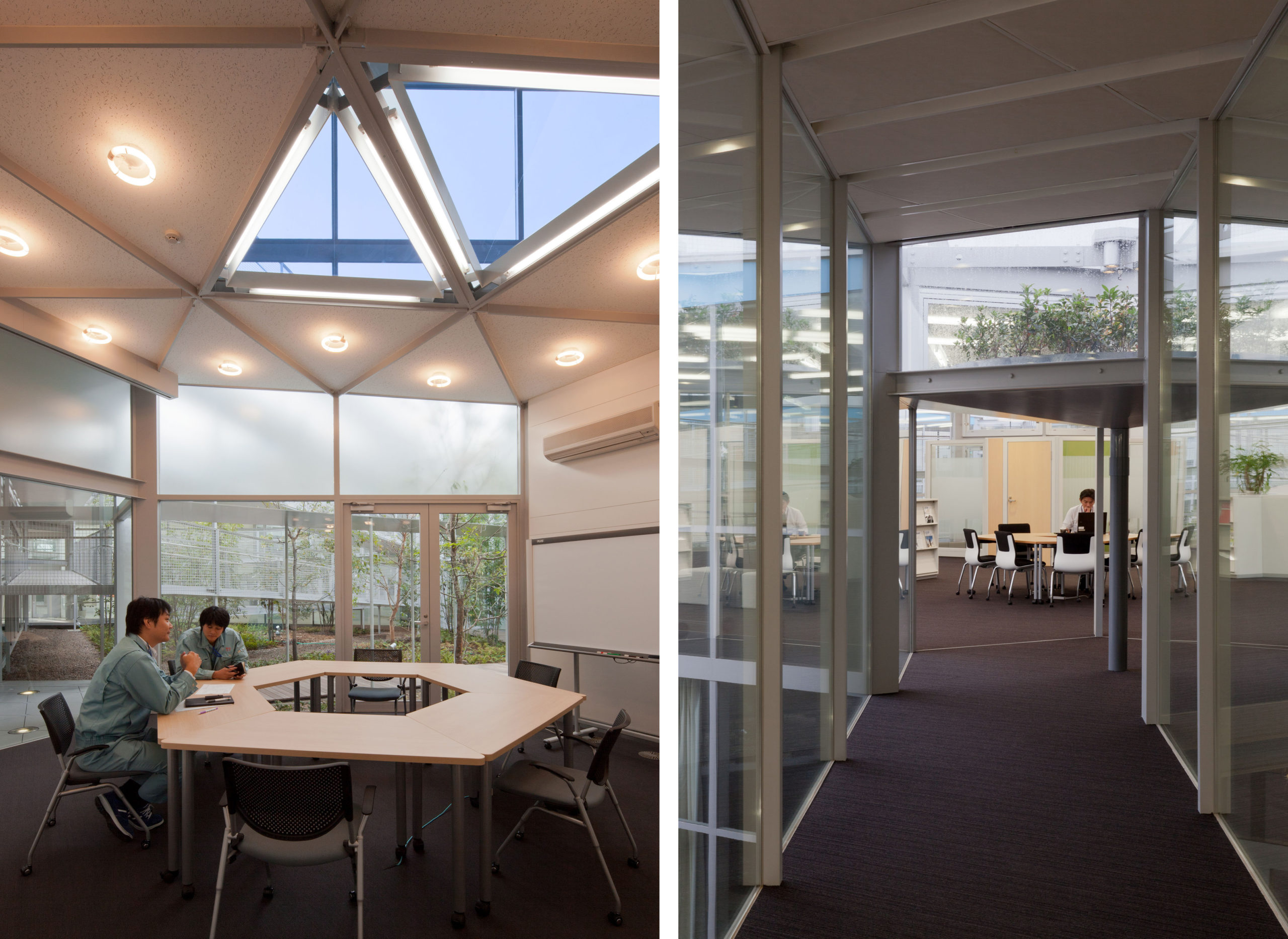 Aron R&D Center by Osamu Morishita Architect & Associates, Aichi, Japan
Aron R&D Center by Osamu Morishita Architect & Associates, Aichi, Japan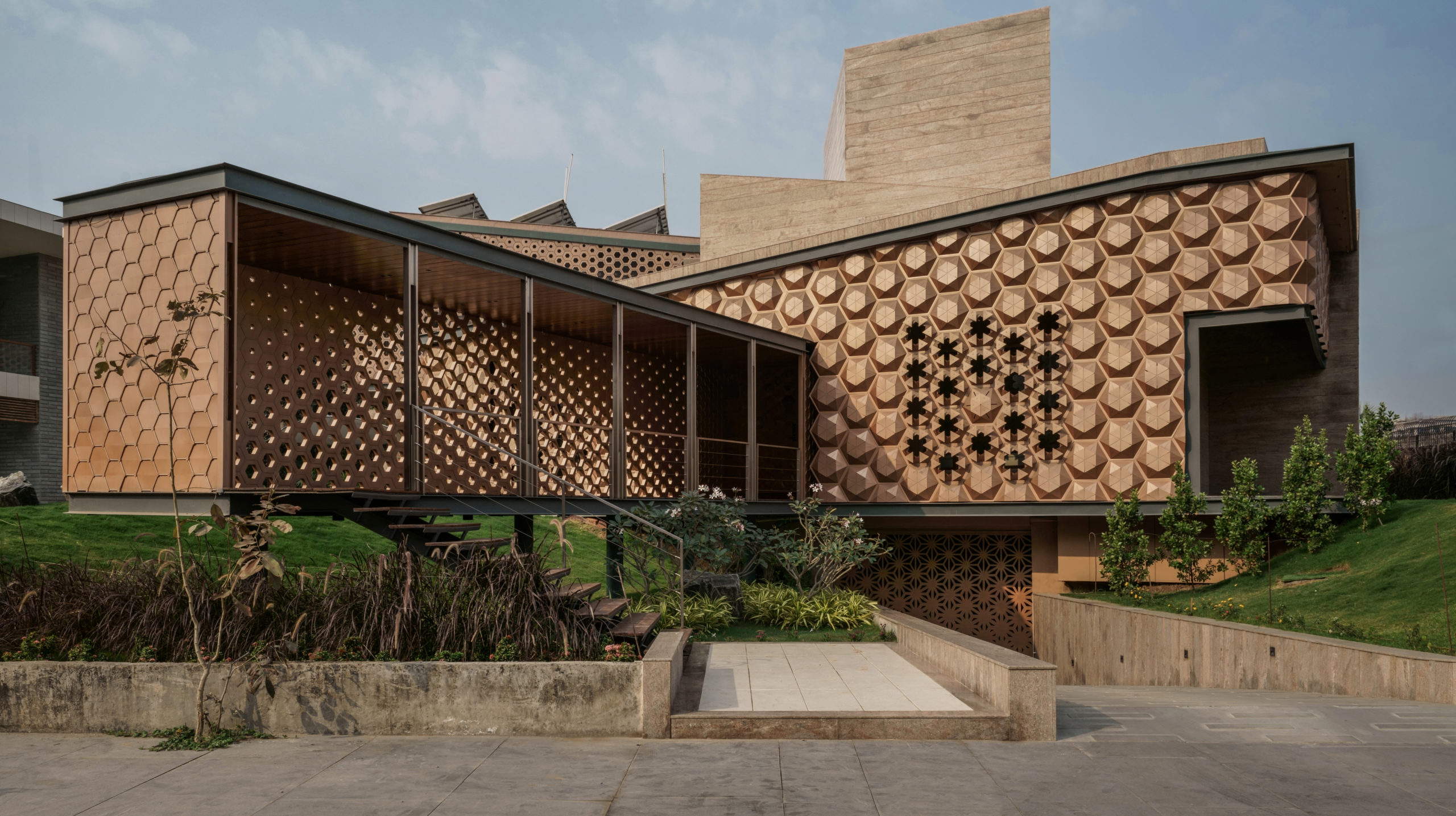
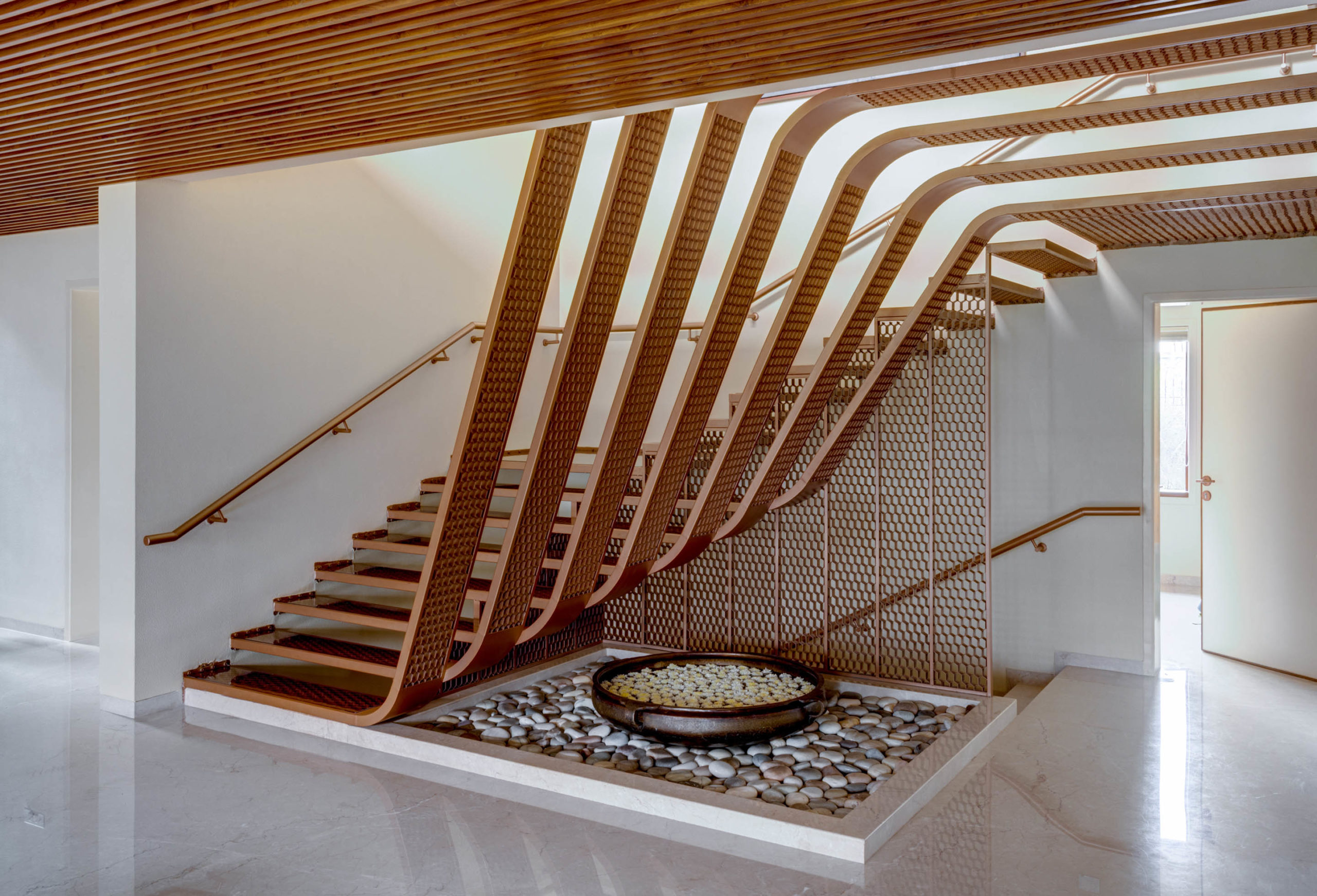 Hive by OPENIDEAS ARCHITECTS, Surat, India
Hive by OPENIDEAS ARCHITECTS, Surat, India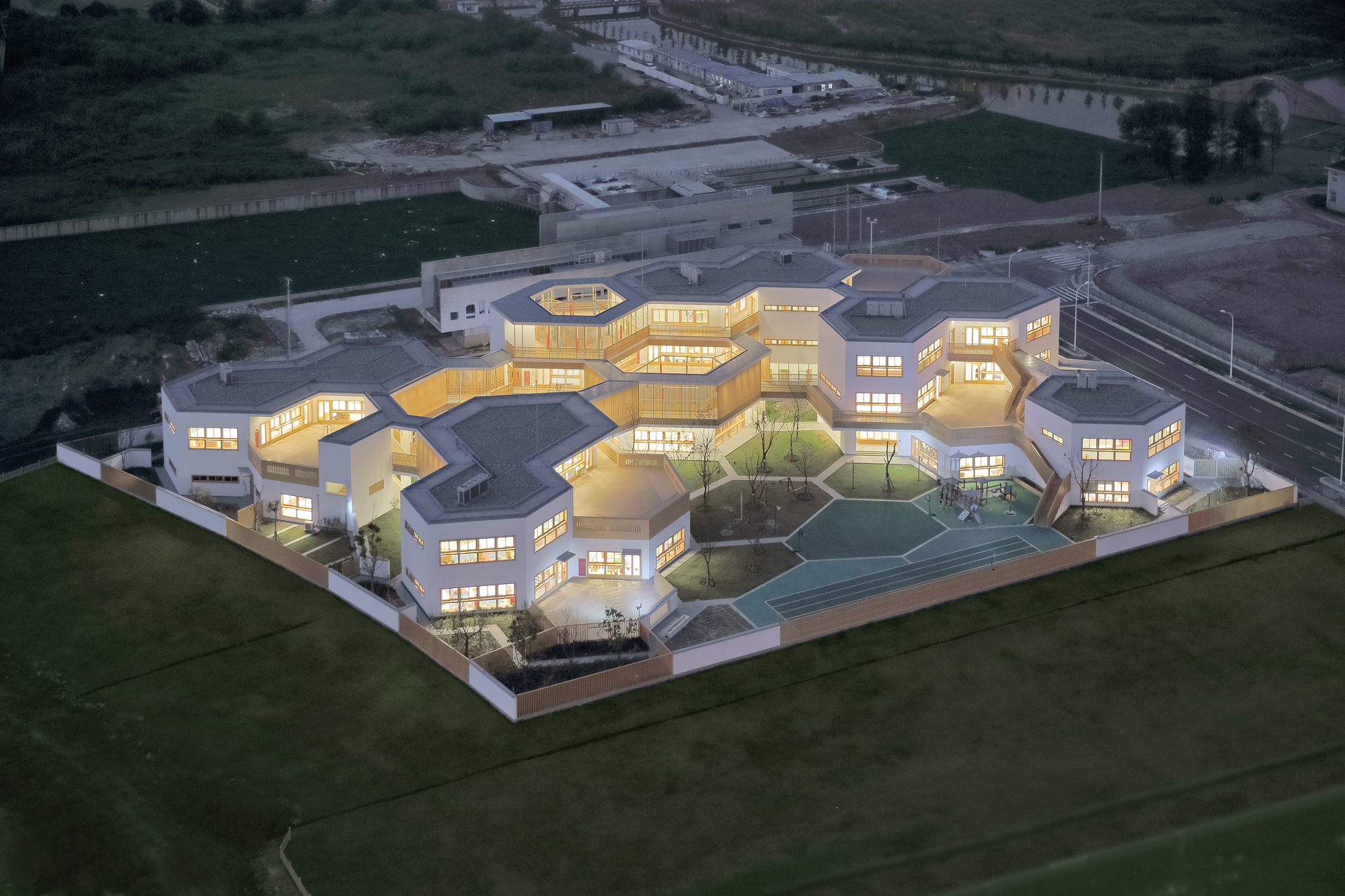
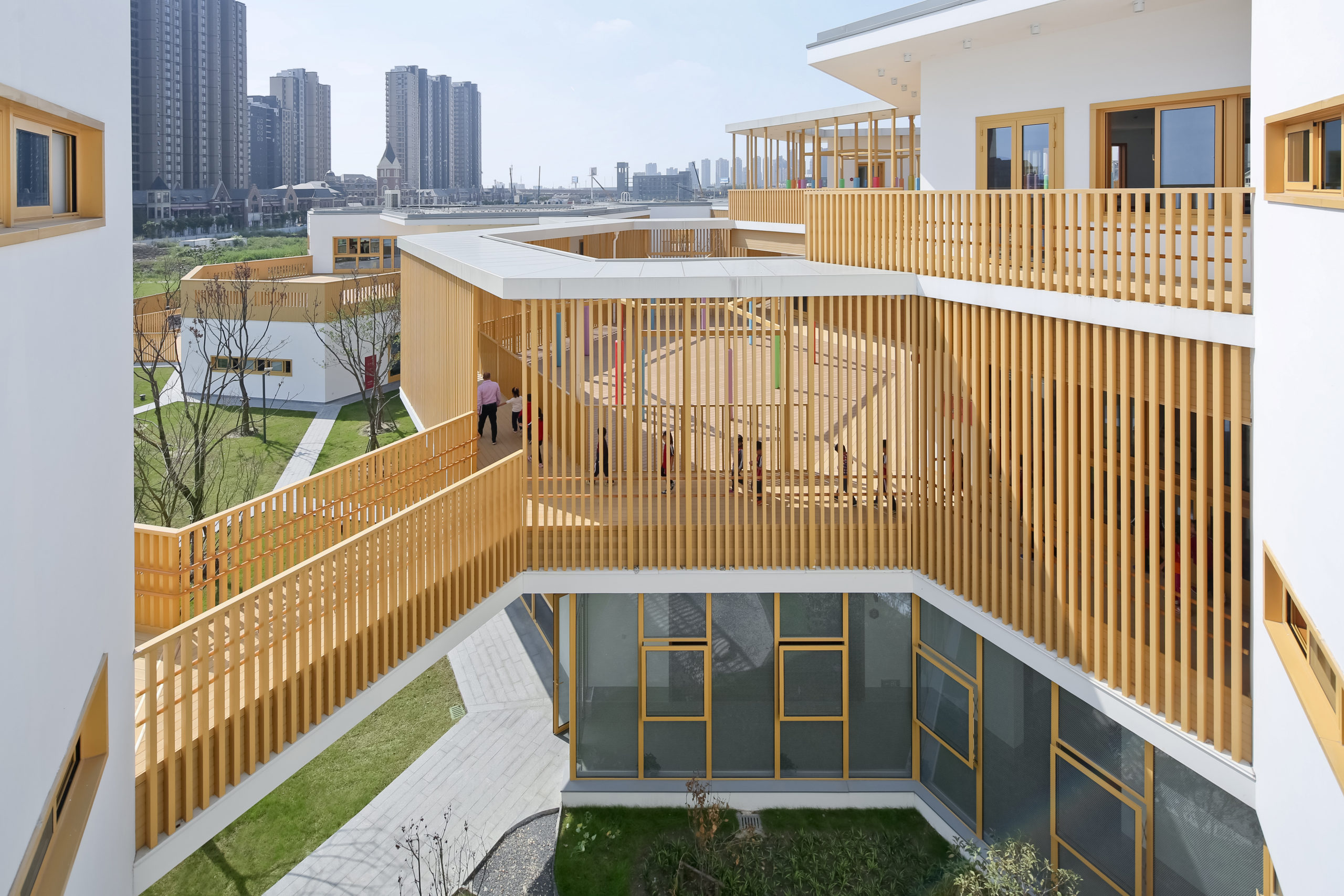 East China Normal University Affiliated Bilingual Kindergarten by Scenic Architecture, Shanghai, China
East China Normal University Affiliated Bilingual Kindergarten by Scenic Architecture, Shanghai, China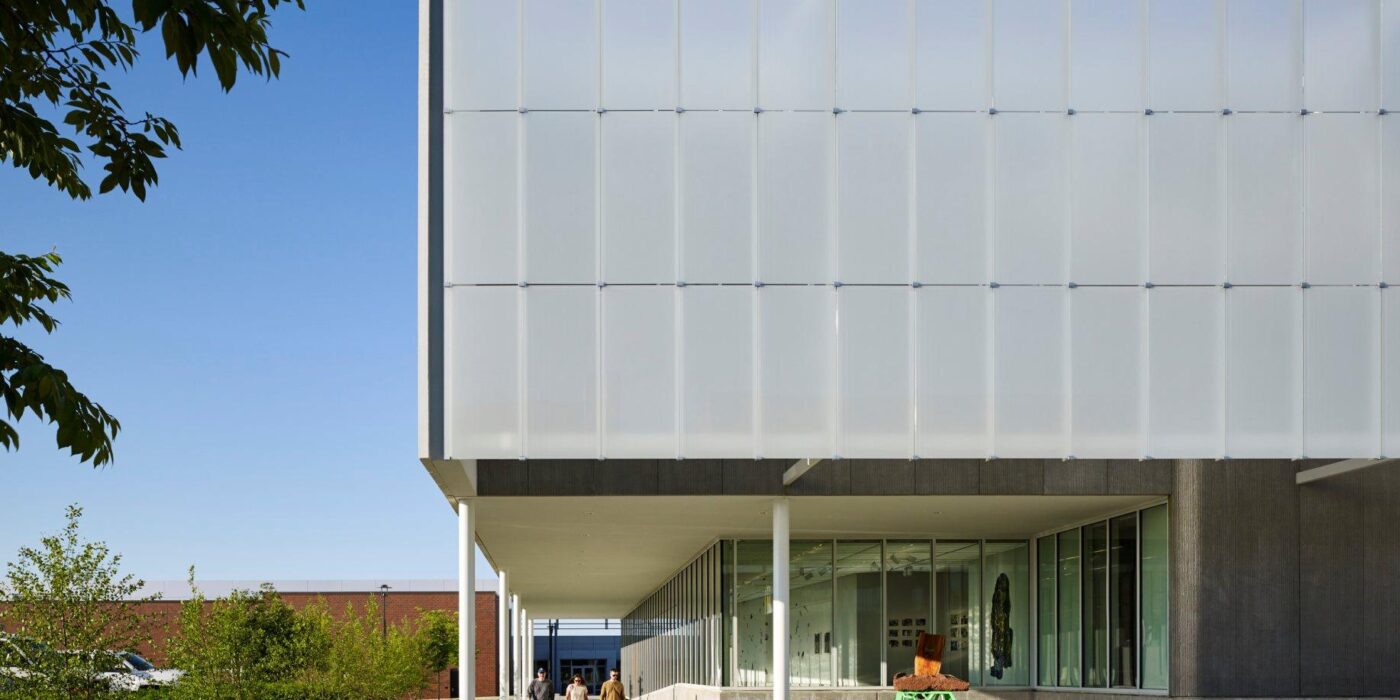
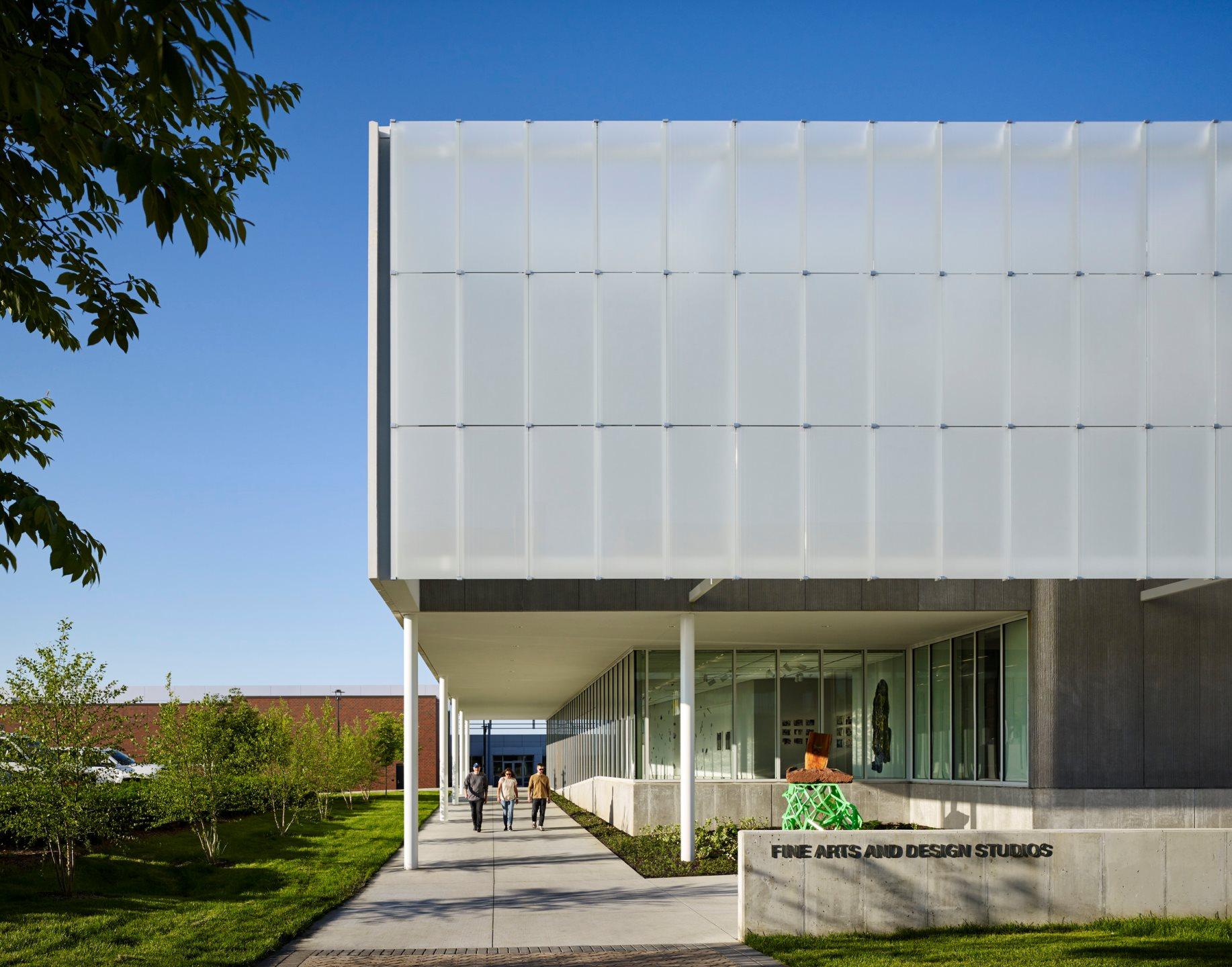
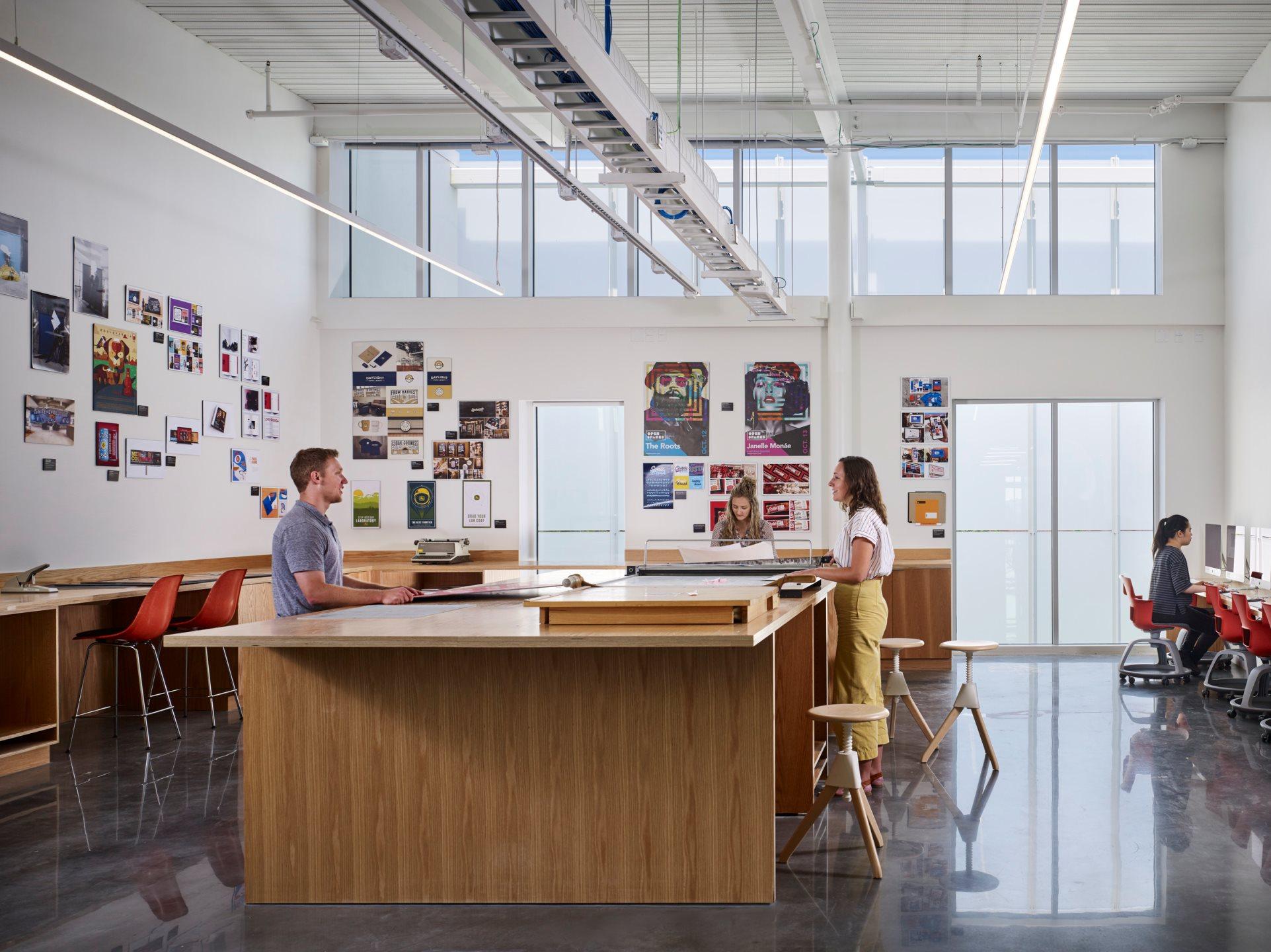 At the heart of the FADS building is the idea of bringing diverse ideas and art practices together. The building was made to exemplify the notion of learning by doing, drawing together disciplines that were previously dispersed across campus: graphic design, sculpture, ceramics, metals, painting, drawing, photography and filmmaking. The architecture was designed to provide a framework for new synergies and enhanced collaboration and, in doing so, inspire creativity and new forms of art making.
At the heart of the FADS building is the idea of bringing diverse ideas and art practices together. The building was made to exemplify the notion of learning by doing, drawing together disciplines that were previously dispersed across campus: graphic design, sculpture, ceramics, metals, painting, drawing, photography and filmmaking. The architecture was designed to provide a framework for new synergies and enhanced collaboration and, in doing so, inspire creativity and new forms of art making.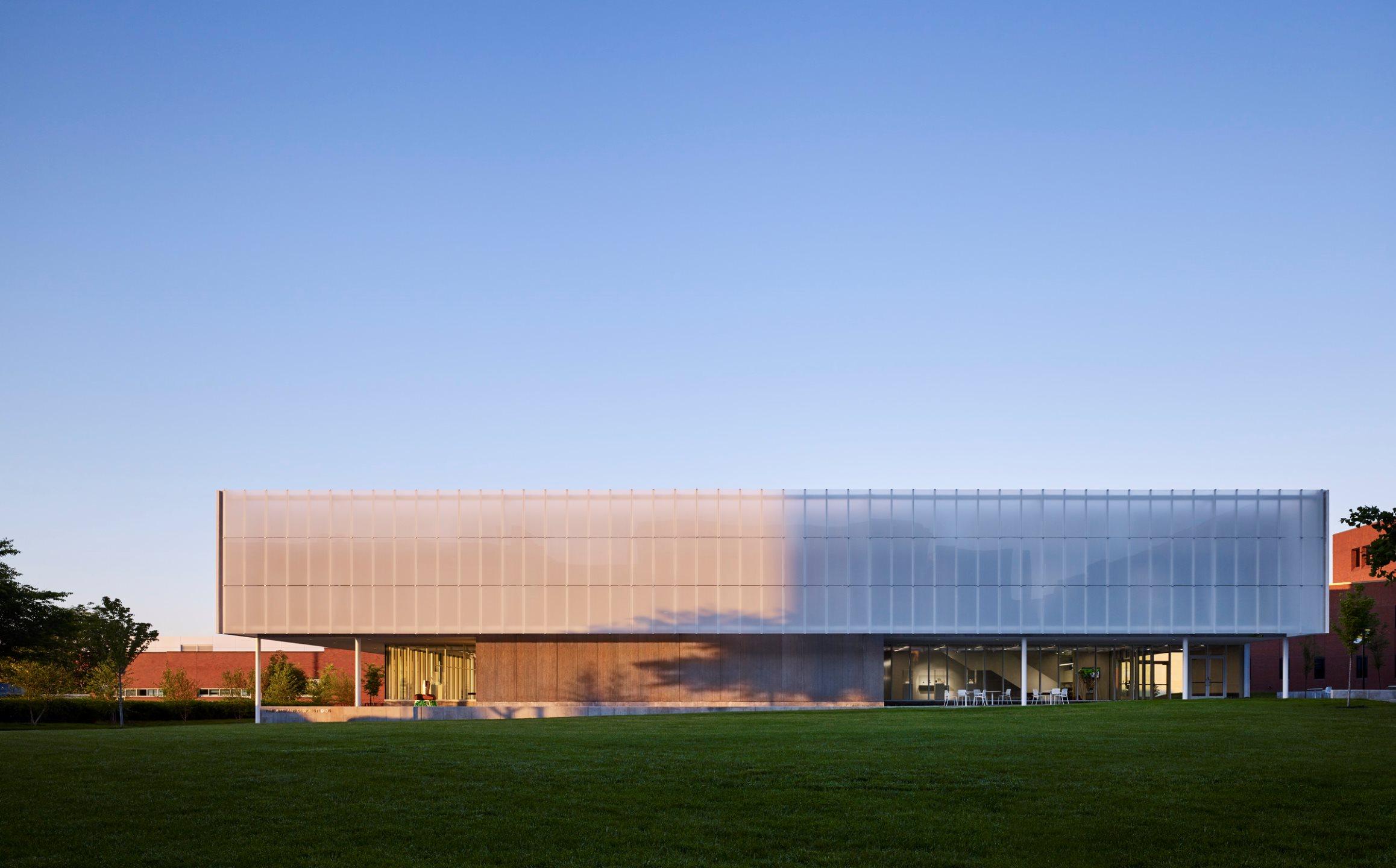
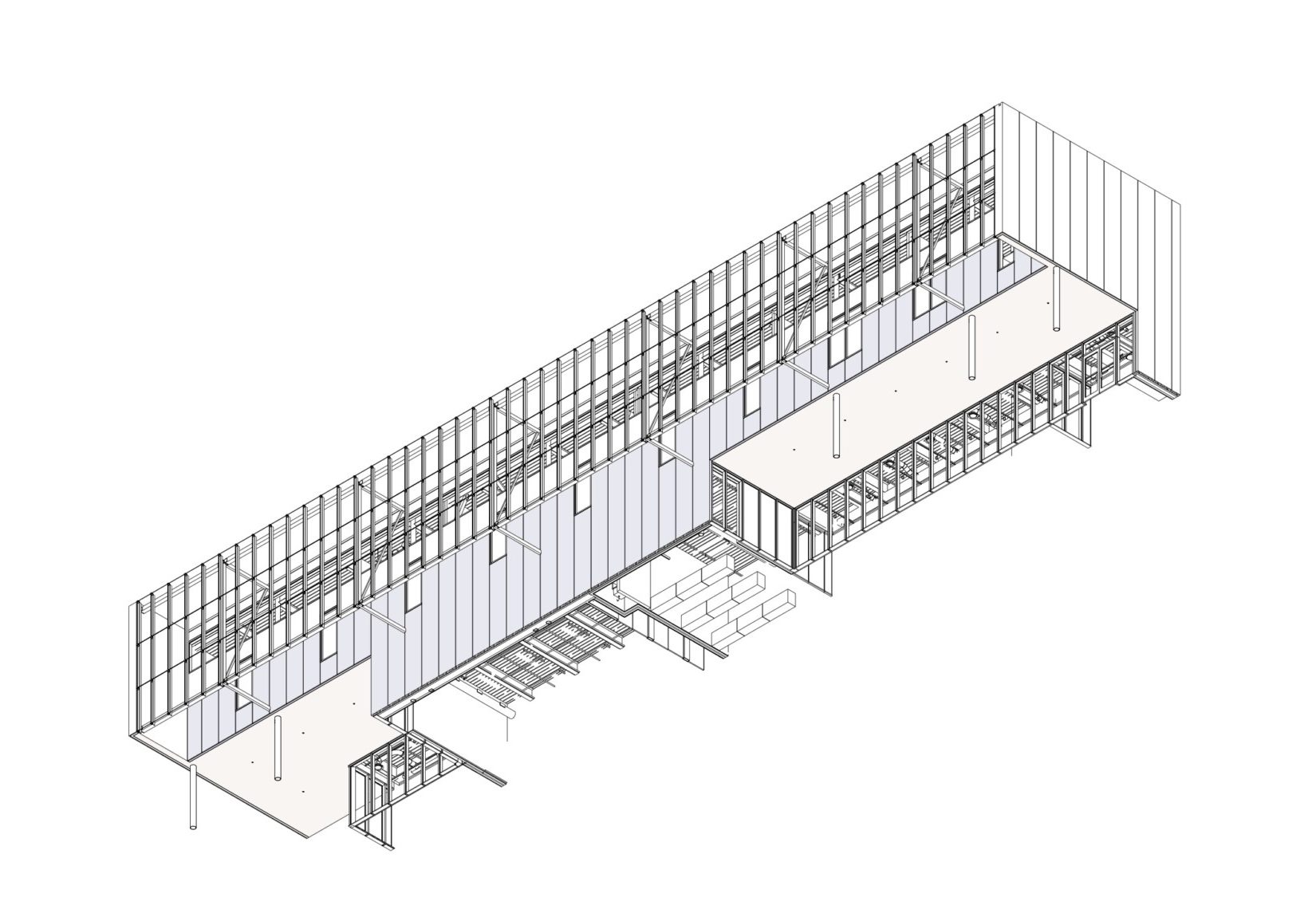 The FADS building was completed with
The FADS building was completed with 
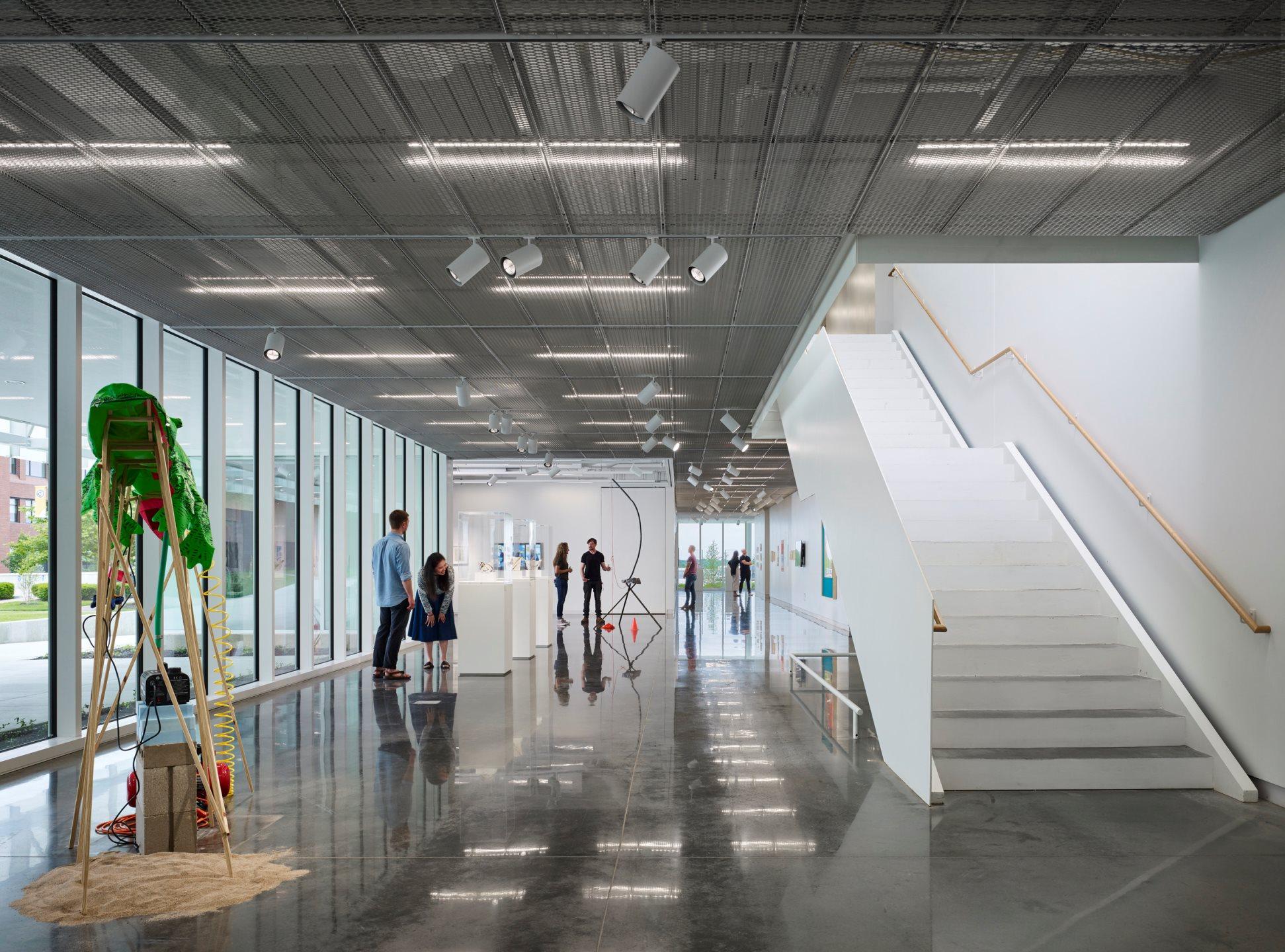 As the design team notes, the FADS building included classrooms and studio space, material storage, multi-use common spaces, as well as display and collaboration spaces throughout building corridors. Fueling a desire to create, FADS includes these hallway gallery spaces and a covered outdoor courtyard, which functions as a year-round workspace for student and faculty artists alike.
As the design team notes, the FADS building included classrooms and studio space, material storage, multi-use common spaces, as well as display and collaboration spaces throughout building corridors. Fueling a desire to create, FADS includes these hallway gallery spaces and a covered outdoor courtyard, which functions as a year-round workspace for student and faculty artists alike.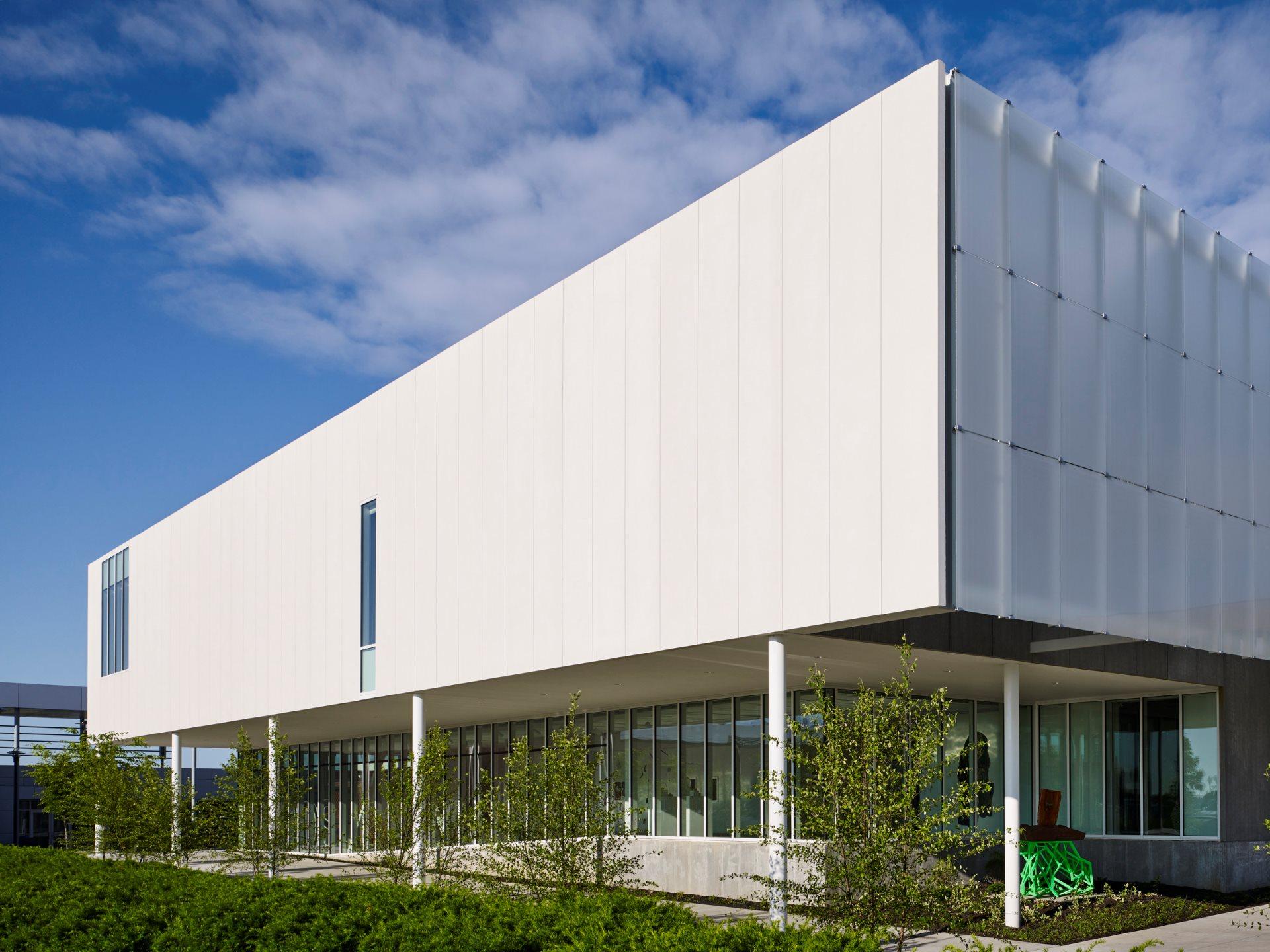
 BNIM’s design features a rectangular volume lifted off the ground by a concrete podium and pilotis. In turn, the building volume is offset by acid-etched and ceramic-fritted glass panels. They worked with architectural glass and systems manufacturer Bendheim to bring the glass panels to life.
BNIM’s design features a rectangular volume lifted off the ground by a concrete podium and pilotis. In turn, the building volume is offset by acid-etched and ceramic-fritted glass panels. They worked with architectural glass and systems manufacturer Bendheim to bring the glass panels to life.
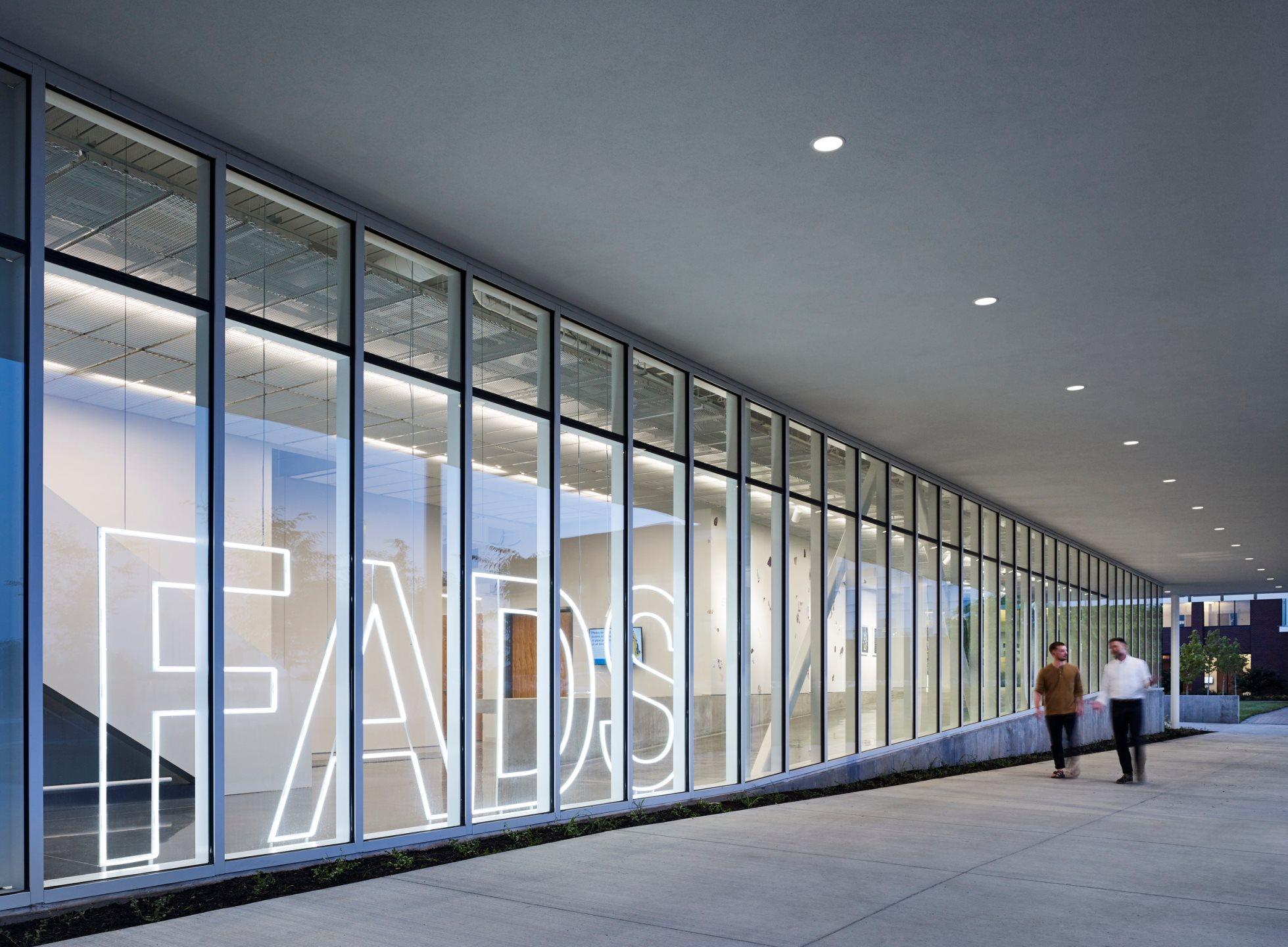 Just steps away from the Midwest Trust Center, the Wylie Hospitality and Culinary Academy, and the Nerman Museum of Contemporary Art, the Fine Arts & Design Studios (FADS) facility was made to anchor a new arts neighborhood on campus. The FADS strengthens these connections and provides space to reimagine how art is made.
Just steps away from the Midwest Trust Center, the Wylie Hospitality and Culinary Academy, and the Nerman Museum of Contemporary Art, the Fine Arts & Design Studios (FADS) facility was made to anchor a new arts neighborhood on campus. The FADS strengthens these connections and provides space to reimagine how art is made.
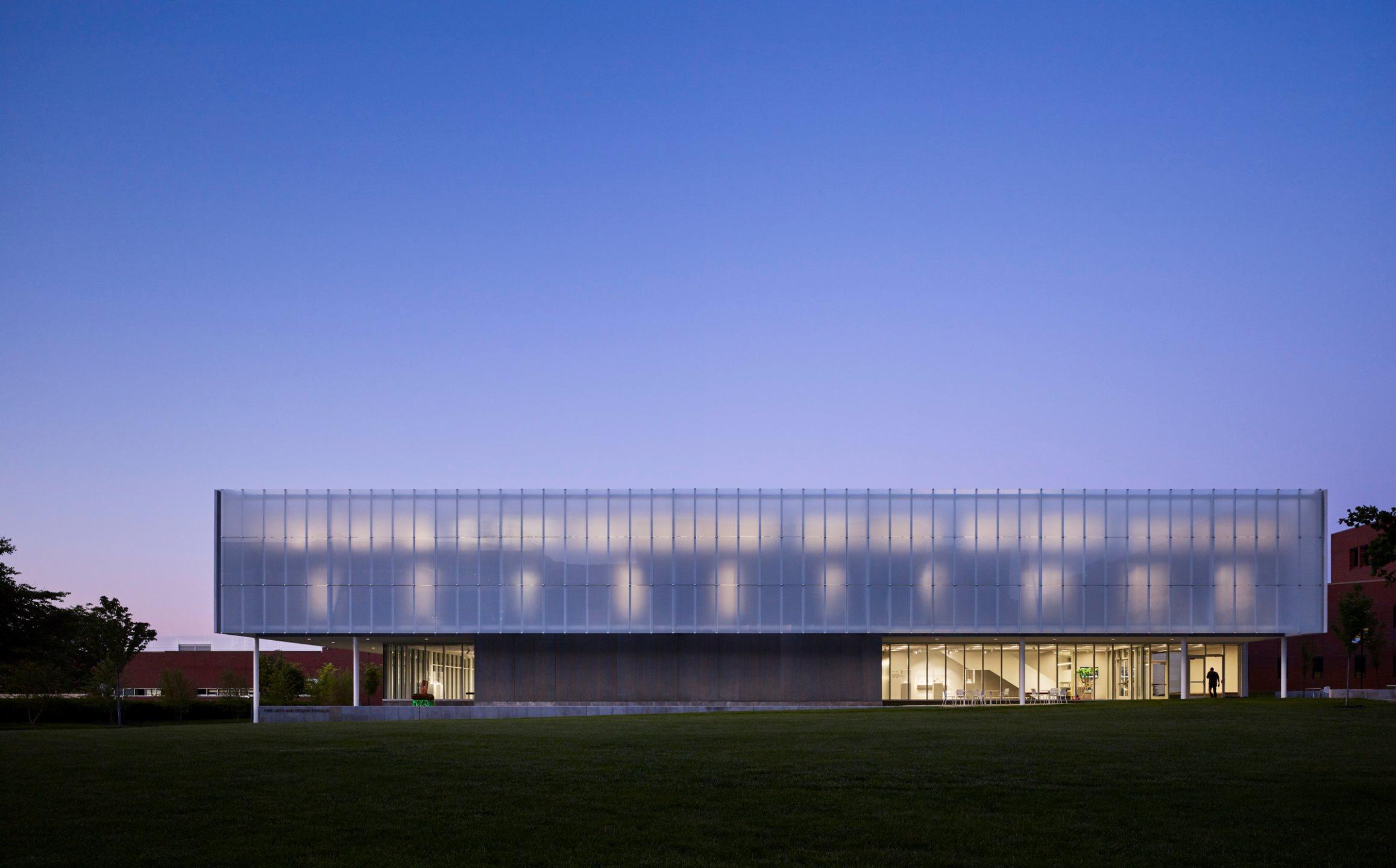 “In the fine arts are these silos of specialties, but the trend is to break through those silos,” says Fine Arts Professor Mark Cowardin. “Painters are embracing more materials, and sculptors are working with ceramics and drawing. We want that sort of cross-pollination, not only with our students but with our professors. We are encouraging a creativity zone where we can build on our reputation and present to our students the opportunity for innovation.”
“In the fine arts are these silos of specialties, but the trend is to break through those silos,” says Fine Arts Professor Mark Cowardin. “Painters are embracing more materials, and sculptors are working with ceramics and drawing. We want that sort of cross-pollination, not only with our students but with our professors. We are encouraging a creativity zone where we can build on our reputation and present to our students the opportunity for innovation.”